Breathing new life into Satwa by the people, for the people
In Satwa, how do you refresh a legacy so paramount to a city?
The neighbourhood of Satwa is a universe. It’s a cosmos of person, place and light, and it feels like a bubble suspended in space – not quite as back then as the Old Dubai it leaves behind but also not quite as now as the sky-skirting skyscrapers and glittering lights of the Sheikh Zayed Road.
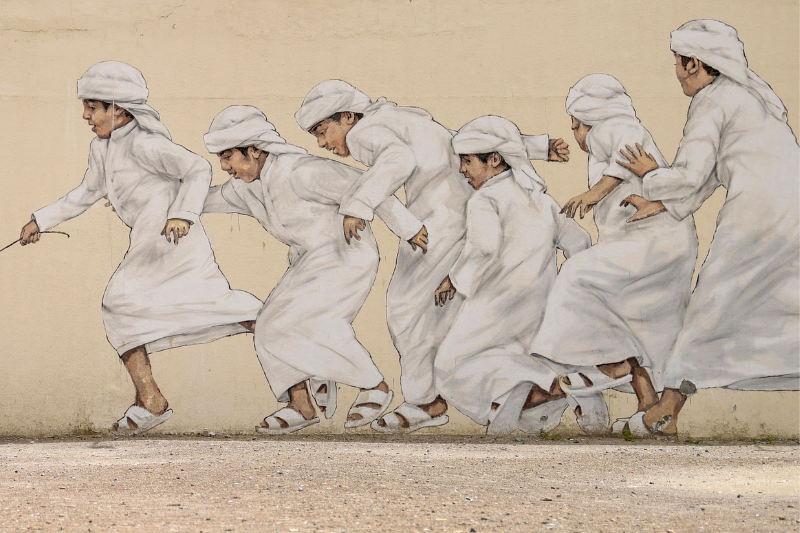
I’ve explored the area maybe once or twice in all my time living in Dubai, but some people have spent their whole lives there. They grow up there, come of age there, embrace adulthood there – a lifetime lived in the compact 2.87 square kilometres.
“I lived in Satwa for nine years, from when I was born in 2001 to 2010,” says Aryaan Asad, a teacher here in Dubai. “My favourite thing was how there were always bright lights, regardless of the time.”
If you walk the honeycomb lanes of Satwa today, you’ll see it in a brand new light, the result of a one-of-a-kind urban revitalisation project conceptualised by Dubai Creative Unit, Dubai Municipality and RTA, and executed by Dubai-based E+A Studio in a record two months’ time.
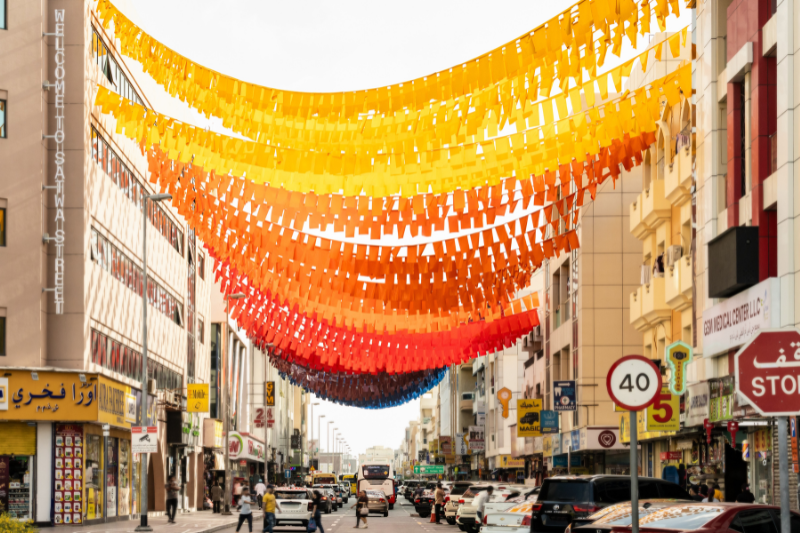
But how does one approach a project of such magnitude, given the history of the area, the loyalty of it’s longtime residents and the visual clutter of the streets. Satwa is the people who live there, and the people who live there are Satwa, and rearing the disruptive head of change in this tight-knit synergy? Perhaps unwelcome.
“Of course, when we were first approached with the location, we were caught a bit off guard, ” says Evgeniia Molchanova, founder of E+A Studio and lead architect on the project. “Usually, Dubai is known for working with clear canvases, new areas and we had this discussion with Dubai Creative Unit, and they said that they really want to bring life to an old area instead of trying to create something that Dubai is perceived for. They want to emphasise the older space and the history.”
“Some of them grew up there, and the fact that there is a real attachment and the intention of actually preserving the older areas, that really inspired us.”
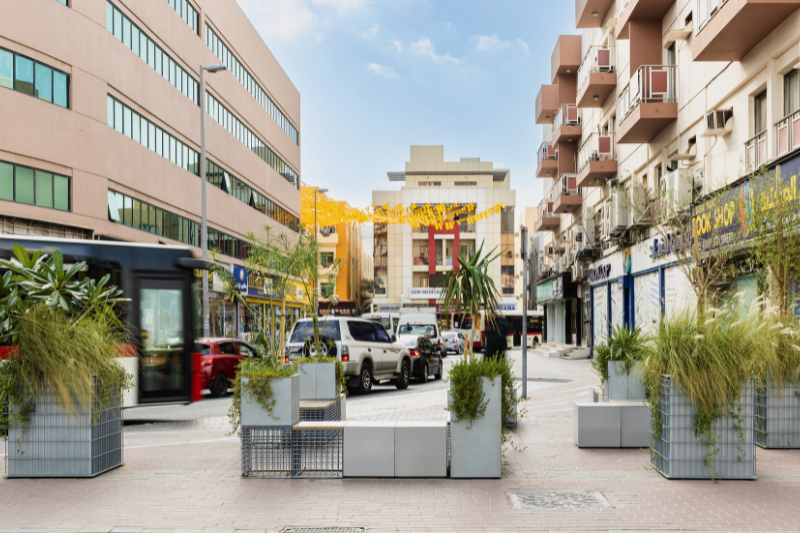
Frozen in time…
So, the heart is in the right place, but what about the function? In the 1960s, this was a quiet Emirati suburb; now it’s residential and commercial chaos, with an exploding expatriate population of Indians, Pakistanis, Bangladeshis and Filipinos, drawn to urban boom in the 1990s.

“Satwa has definitely become busier and a little overpopulated over the years,” says Janine Dsouza, a former Satwa resident from 2003 to 2013. “Although there have been a few changes with the heritage-based modern graffiti and the crowding of shops and people on the street, overall architecturally Satwa remains the same.”
Earlier attempts to reconstruct the area were met with backlash from creatives, and the recession of 2008 made sure that chapter was closed for good. The sparkling, raw character and traditional charm of Satwa lived on, as was demanded by the people.
A personal affair...
“We wanted to identify what the area is like and how we can bring it to the surface more,” explains Molchanova. “We wanted to create a design that is carefully placed around the area, that doesn’t interfere with the life of the people, and can just enhance the life. This is what gave us the idea of the approach of asking the people what they need.”
Respond they did, for majority of the elements of this beautification project were designed to serve the community.
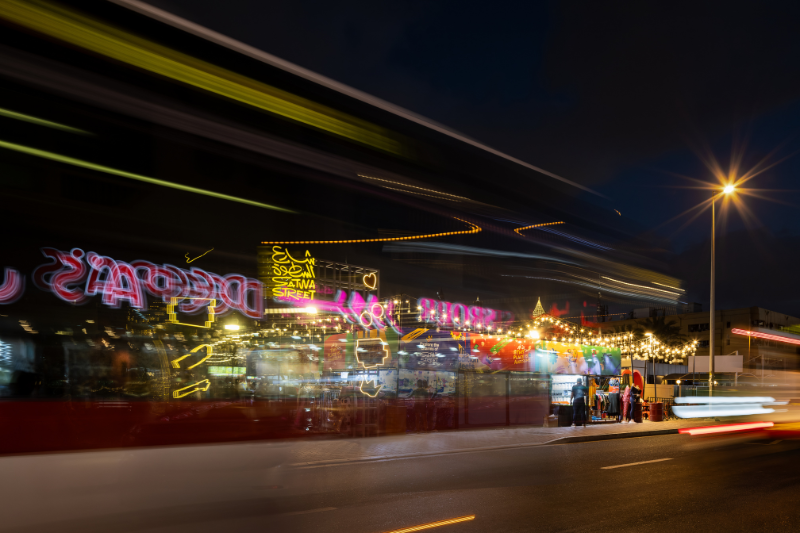
“When we went to do the site visits and try to speak to people, it almost felt like we were aliens, especially how people would react,” recalls Molchanova. “But every time we would need anything from the local residents or the business owners, they would always be open and happy and ready to assist. They would get so excited just about the fact that something is actually happening here and somebody is thinking about them.”
Designed for the people, by the people…
As such, the design team worked closely with the residents to understand the pulse of their needs, and the result was a plan with a mix of both functional elements and aesthetics. The social, communal spaces are an example of that, constructed upon the request for a place to sit by many of the locals and labourers.
“You know, the people from Bangladesh, they tend to sit on the floor all the time, so they said it’s nice if we can also have a space to sit. It was also really interesting when we spoke to the people who work in Ravi and they said they wanted social spaces outside. Most of the people asked for the same thing, no matter the nationality.”
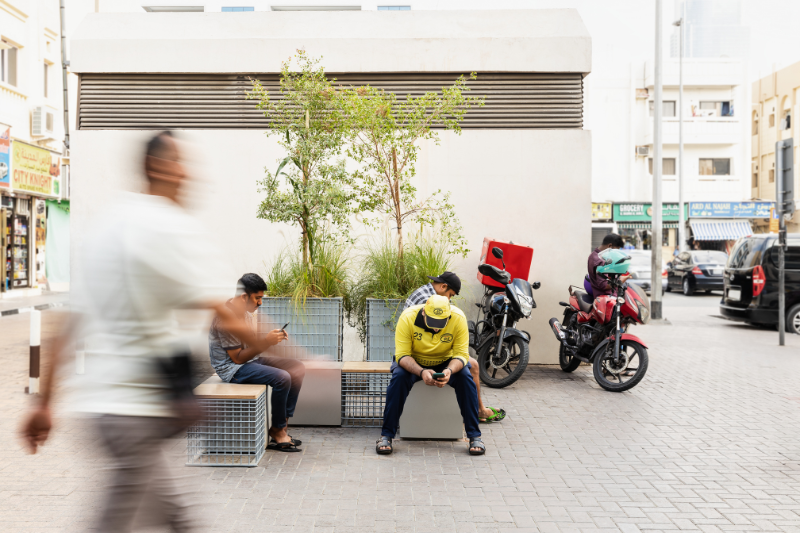
Neglected public areas were transformed into mini parks with modular seating that could be easily adapted and configured to fit the irregular spaces. Made using galvanized stainless steel and locally sourced stone, these benches also double as planters for native flora adapted to Dubai’s unforgiving climate.
The subtle wayfinding elements include the white wavy lines on the pedestrian pathway marking the walking route, and dynamic light installations featuring stick figures on the street lights and the UAE’s famous three-finger salute that only add to the night time vibrancy of the area, instead of competing with the loud colours and lights.
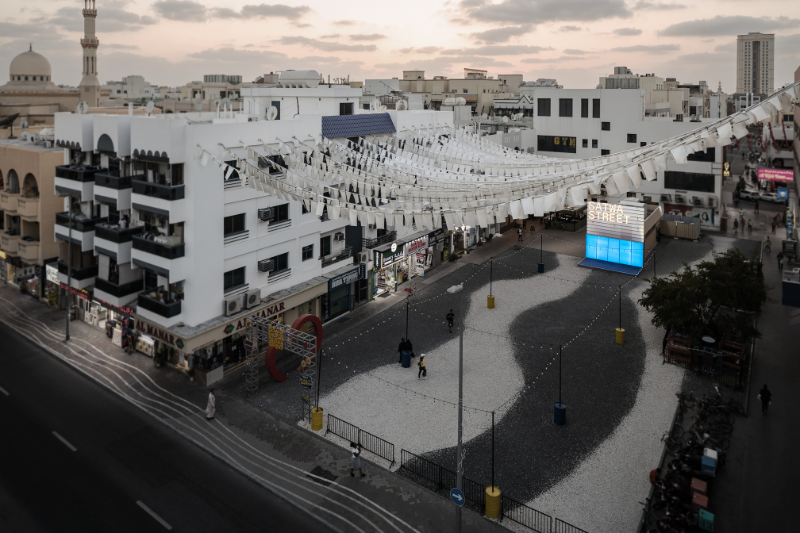
The colourful shading over the main Satwa street was created out of a need to work around a legal constraint. Unable to make any alterations to the facades of the privately-owned buildings, the roads or the pavements, a design was created out of the air
“When you look at the street from the roundabout, it almost looks like an unfinished picture frame, so we wanted to finish it up visually from above with these awnings, and of course for the shading purposes,” elaborated Molchanova. “Our designs are usually quite minimal but the street itself is really happening, it’s full of colours, it’s full of people.”
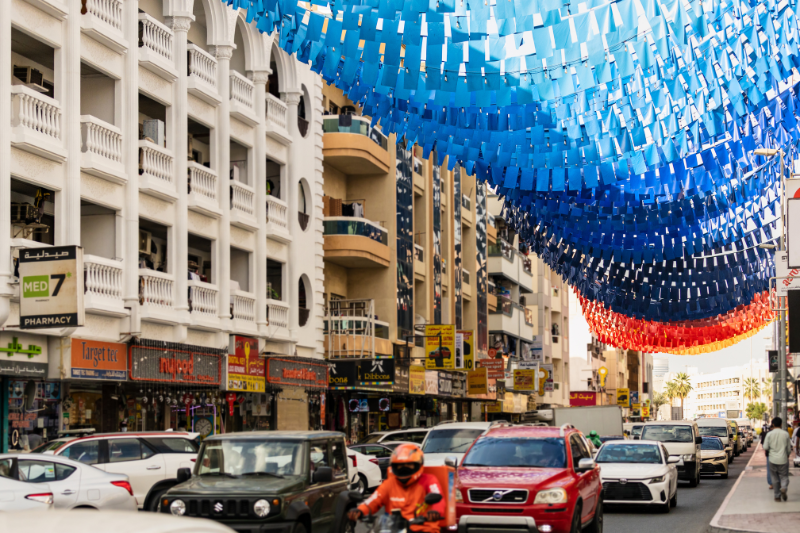
The inspiration also comes from the large concentration of tailors and tailoring businesses in the area – historically and even now – a sweet tribute to the cultural ethos of the community and an effort to integrate it as much as possible.
“We wanted to ask them to help us implement this design. But for durability purposes, it wasn’t possible to use regular fabric.”
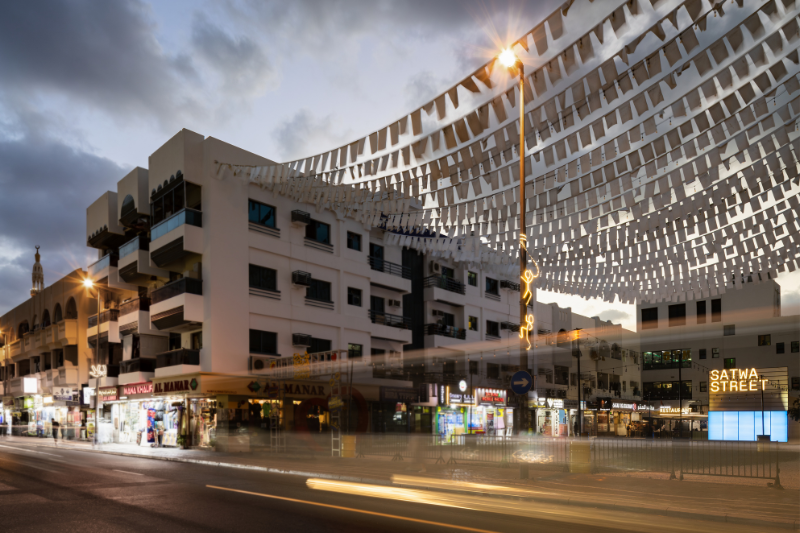
The empty plots owned by Dubai Municipality were given a makeover with grey and white gravel stone flooring and converted into public squares for pop ups, community markets like the Filipino night markets and a stage for street music, a feature requested by the Filipino community.
“We thought it would be fun to provide them a platform where they can sing, because they love singing.”
Seeking soul…
“For Ravi Restaurant, we met the whole family, we met the waiters, everyone, and some other businesses there as well, every time our labour was on site, they would come out and offer everyone tea,” says Molchanova through a smile. “The plants were planted, and there was a point when we got back to the site, people from Ravi came to us and said that were watering the plants, and if we needed them to continue watering them. They literally go around and water the trees and the plants, even the wild ones.”
Follow E+A Studio’s work on @eastudio.design
Images: Supplied
